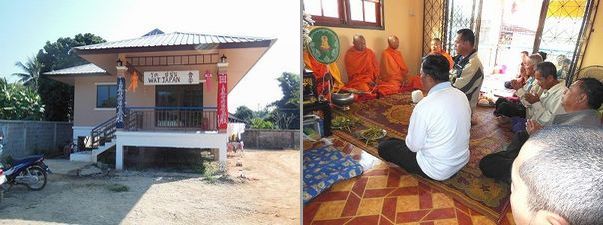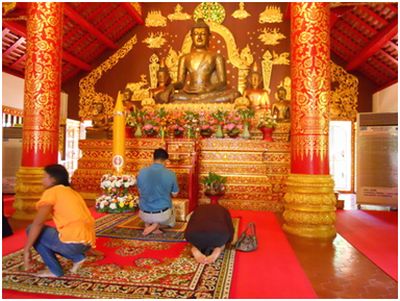Self-introduction of Suchitoo:
Born in Tokyo. I graduated from Chuo University, worked for an airline company, and was a guest professor at Tokyo College of Transport Studies.
Became a priest of Wat Pak Nam, Thailand, acquired Japanese Buddhist qualification at Ritsho University, established Japan-Thai Culture Exchange Center and Nichiren sect Thai Temple in Thailand (currently: Nichiren Sect Hoshinji Master, Japan Health Taikyokuken Association Master), and I set up the WAT JAPAN private temple in Chiang-Rai, Thailand in 2013*.
My hobbies are posting articles on social media, and music, travel, food connoisseur, photography, biking, gardening, visiting hot springs, etc.

Suchitoo opened the Japanese version of “Suchitoo’s Soliloquy” ** blog in 2004, and I’ve been for the next 18 years, mainly introduced Thai Buddhism, and responded to posts about meditation and tourism, as well as questions and consultations. The articles in the Japanese version of the blog have been said to be wonderful and useful, so I wanted people all over the world to read them, so I decided to open an English version of the blog site.
Because of that, I first picked up 2-3 articles from the Japanese version of the blog, translated it into English, and posted it on the newly constructed blog site *** to see what would happen. When I tried it, there was good feedback that we could understand it because it was in English, the content of the article was very good, I wanted you to include a lot of explanatory photos, and I was interested in Japanese culture so I would like you to share with us such kind of information. So that I was convinced that I should continue do it.
Therefore, as the next step, I increased the types of articles to be selected, selected multiple articles from the Japanese version of “Suchitoo’s Top 10 Most Popular”, and translated them into English so that I could continue to see reactions from visitors for a while.
Then, I posted 19 articles and received 145 comments, but most of them are compliments.
We apologize for the delay in replying to those who commented.
Let me introduce some comments for my articles as below.
・This is the first great blog, I’ve been searching around for.
・The article is great from a blogger’s point of view, thanks for your efforts. Please continue forever.
・ Each article is really wonderful and very useful information. Thank you for sharing such information.
・ I’m working on an e-book, but please consider sharing some of the articles.
・ If there is a donation button, I would like to donate. Should have a button.
・This really responded to my (human) shortcomings, thank you!
Almost half a year has passed since the English version of the blog was opened, but since we are receiving great praise from foreigners like this, it is important to continue posting so that everyone will be pleased regardless of genre. I believe it does.
As you praise, “The first blog I’ve been searching around for,” it may become a special presence in the blogosphere.
With the support of everyone who has been highly evaluated as an article that can change the feelings of those who read it, notice it, and have a chance to take some action in life, I can continue to do so for a long time. I hope I can do it. Thank you for always browsing.
*Wat Japan
261moo3, Meakautomtashut, T. tashut, A. Muang, Chiang-Rai, Thailand 57100
Phone: +66-80-135-1773, Web: http://marsk.html.xdomain.jp
** All are original articles by the poster Suchitoo.
*** This blog site uses a theme chose from WordPress themes.

